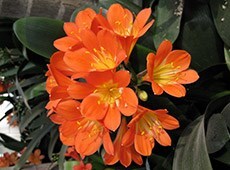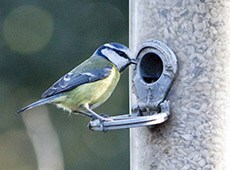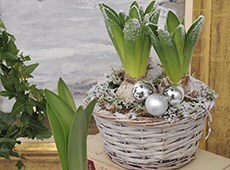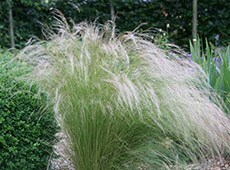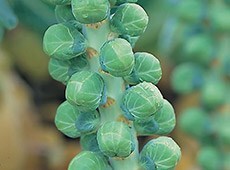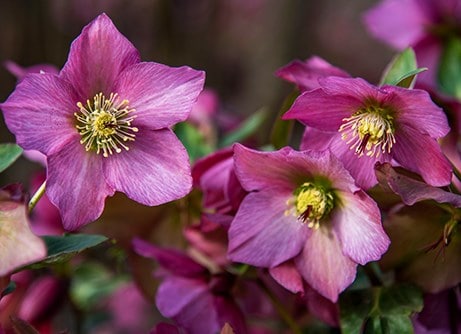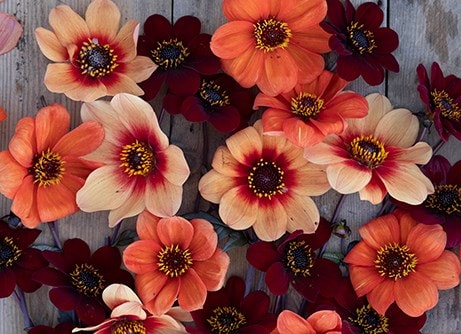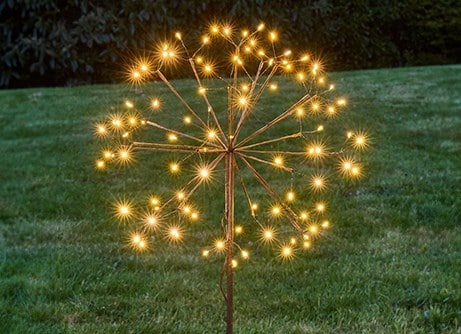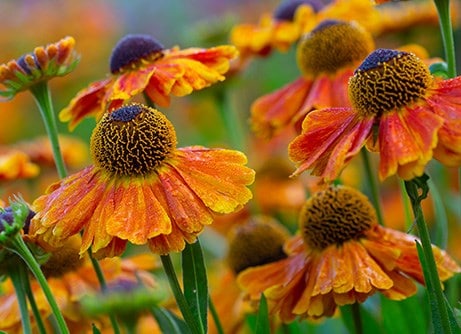Kitchen garden
- Clear any remaining plant debris from the vegetable plot
- Protect cleared soil with polythene to keep soil dry for winter digging
- If gardening on wet soil, work from a scaffold board rather than standing directly on the soil to avoid compaction
- Prune free-standing apple and pear trees, currants and gooseberries
- Avoid pruning cherries and other stone fruit until late spring to avoid silver-leaf disease
- Apply grease bands around trunks of fruit trees to protect against flightless female winter moths
- Prune grape vines before mid-December to avoid bleeding
- When soil is not frozen, continue to plant fruit trees and bushes
- Divide and replant rhubarb into prepared soil that has been enriched with plenty of organic matter
- Lag outdoor taps and hose points to protect them from freezing
- Sort out seed boxes and plan what is to be grown next year.
- Order fresh seed
Ornamental Gardens
- Apply mulch to borderline hardy plants such as Agapanthus and Phygelius
- Move permanent container plants such as Camellia or Agapanthus to a sheltered position against a house wall.
- Wrap large tubs that are unable to be moved, with bubble plastic to protect plants’ roots from freezing.
- Bring any smaller tender plants into the greenhouse or a cool room to protect from frost
- Erect a wire enclosure around tender plants in garden borders such as Musa basjoo, and pack with straw to protect their stems and roots from frost
- Continue to lift and divide herbaceous perennials if weather and soil conditions permit
- Prune Acer and Birch (Betula sp.) trees before mid-December to avoid bleeding from cut stems
- Avoid pruning deciduous magnolia trees until the summer
- Avoid pruning flowering cherries and flowering almonds (all Prunus species) until late spring to avoid silver leaf disease
- Most deciduous trees and shrubs with the exceptions of those already listed can begin to be pruned this month
- Plant winter flowering clematis such as C.cirrhosa and C. napaulensis
- Do not walk on lawns during frosty weather as this will damage the grass
- Use holly, ivy, crab-apples such as Malus Red Sentinel and pine cones for festive indoor decorations and wreaths
|
Glasshouse and indoor plants
- Reduce the frequency of watering for indoor plants as growth slows in the cooler conditions and lower light levels
- Move houseplants on to a sunny windowsill to make the most benefit of the reduced daylight
- Ventilate greenhouses and conservatories on mild days
- Ensure greenhouse heating systems are working properly
- Keep citrus in a sunny but cool position indoors, as leaf-drop will occur if brought into a room where temperatures are too high
- Take the opportunity to clean used pots and seed-pans ready for the spring
Pest and Disease Watch
- Check fruit and vegetable produce in store for rots on a weekly basis and remove affected items to prevent it spreading
- Check apples and pears for signs of canker and prune out affected stems where possible.
- Check overwintering tubers and rhizomes of dahlias and begonias regularly for storage rots
- Avoid wetting foliage when watering plants in greenhouses to minimise risk of fungal infections
- Check for presence of greenhouse spider mite, mealy bug and scale insects on indoor plants and use a systemic insecticide to clear them before they build to large numbers
- Place outdoor containers on bricks or pot-feet to ensure the drainage holes are kept clear of blockages
- Net brassicas against pigeons and ensure tree guards are in place against rabbit predation
- Apply organic winter washes to fruit trees to despatch overwintering insects and their eggs
- Remove dead foliage and flowers that would be a source of botrytis infection
- Clean moss and algae from paths
Wildlife gardening
- Check wood piles before burning to ensure hibernating hedgehogs and toads are not present
- If planning to plant new shrubs, include berrying species such as Sorbus, Pyracantha or Berberis to provide food for birds
